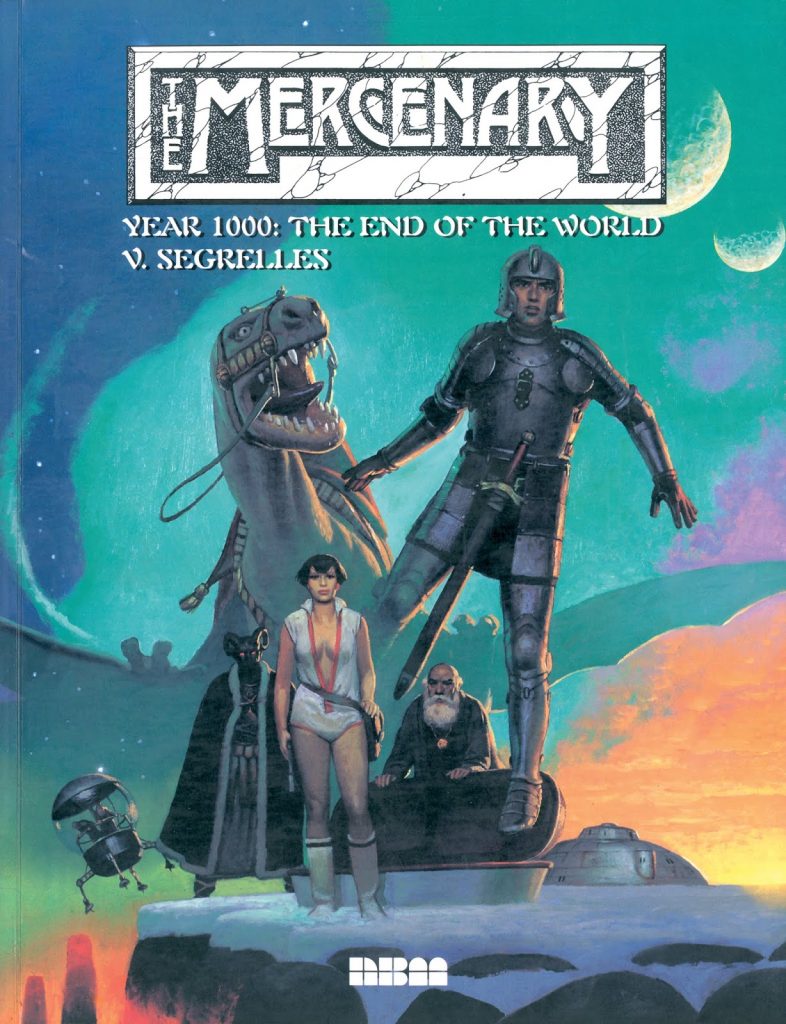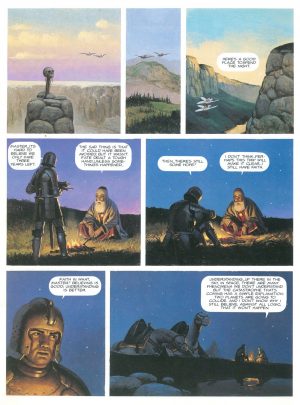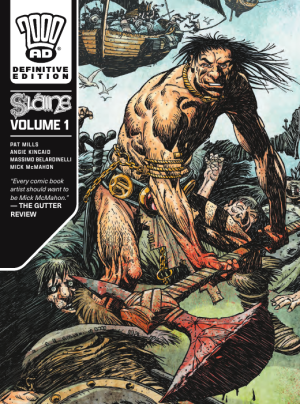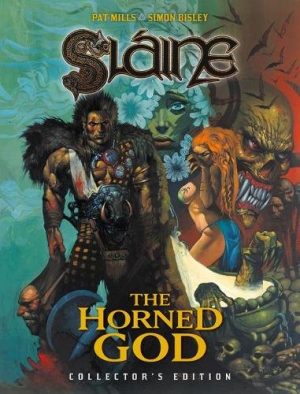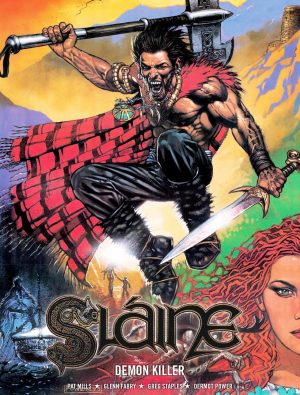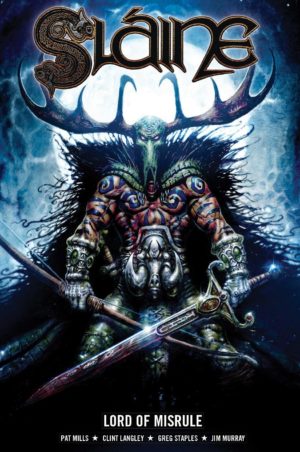Review by Frank Plowright
Vicente Segrelles has a unique way of starting his stories. He’s not interested in the functional aspects of telling a story, so just drops us into something toward the end of a scene, enabling him to move more rapidly to the sequences he’s really interested in drawing. This time it’s the revelation that the monks with which the Mercenary is allied are aware the world will end in three years and it’s approaching the final opportunity to safely see the phenomenon that will bring it about. After the couple of pages of explanation Segrelles can move on to what he really enjoys painting: the serene scenes of the Mercenary on his dragon flying over exotic landscapes.
Year 1000 is a far stronger outing than the comparative disappointment of The Voyage, with the Mercenary transported to an entirely different planet, one where science is far more advanced than the Mercenary’s usual home. What’s pleasing is that despite not having any scientific knowledge, the Mercenary’s resourcefulness means he’s able to make valid suggestions that seem to have eluded others. The logistics of the plot also enable Segrelles to mix and match his exotica, myth intruding as well as science, and he makes the most of those opportunities. Unusually, he also supplies a little background information about the regular supporting cast.
Because Segrelles has stepped from fantasy into science fiction, Year 1000 not only reads very differently, but looks very different also. He’s used very muted shades in previous books. These still predominate, but they’re mixed with brighter colour giving this outing a unique gloss, and it’s nice to see Segrelles’ design for the future science, which looks pulled from 1930s pulp covers.
The Mercenary had very definitely hit a rut, but Segrelles has pulled the series out by freshening it up, meaning Lost Civilisation is something to look forward to.
